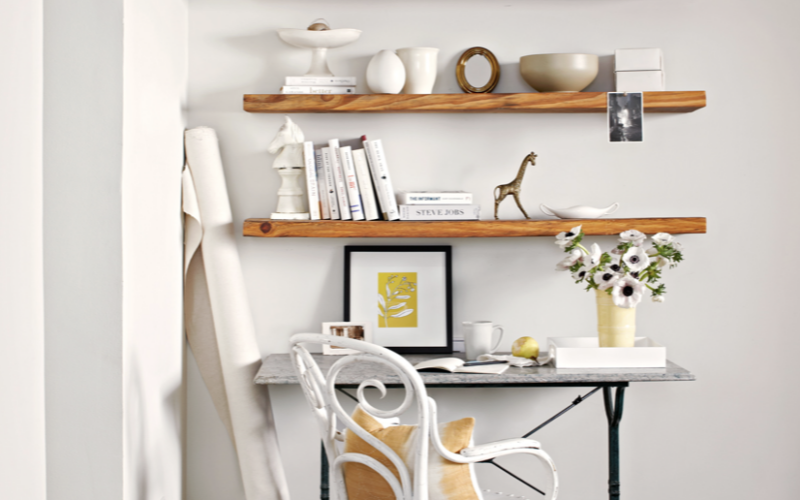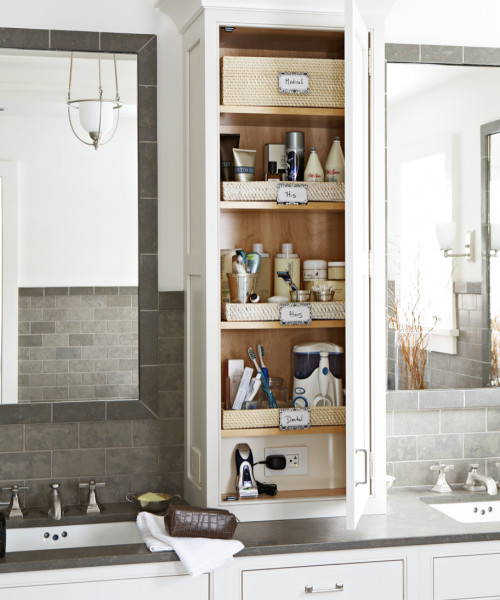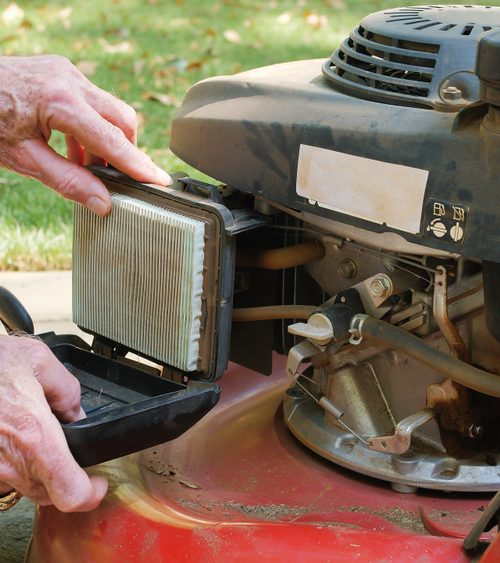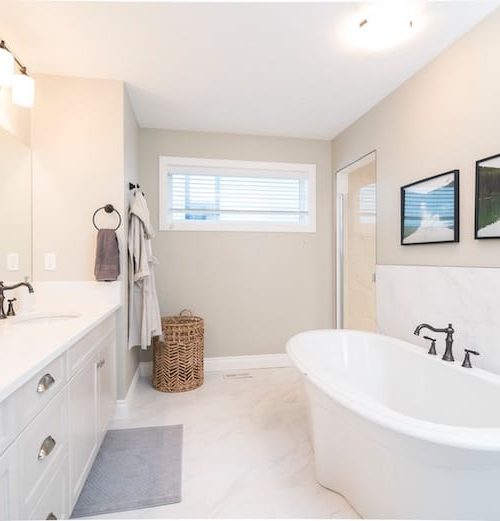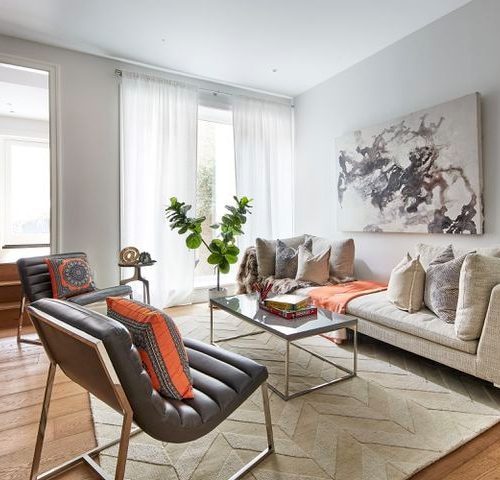By Emily VanSchmus | BHG.Com
Troy Warren for CNT #HomeGarden
No more working from the couch! Follow these simple steps to create a personalized home office.
At the beginning of the pandemic, many remote workers made do with temporary workstations, whether that was the dining room table, a lap desk, or spare bedroom. But after more than a year away, workers are starting to return to corporate offices—though not all are going back full-time. According to a recent survey by Upwork, one out of every four Americans will continue working remotely this year. If you have similar plans, it’s likely time to rethink your work-from-home setup.
Now that working remotely has become a permanent solution, you’ll need a permanent workspace as well. No matter what your current work-from-home space looks like or how much room you do (or don’t) have, we’ll walk you through setting up a home office that’s both pretty and functional.
Choose Your Workspace Wisely
The first thing you’ll need to decide is where you want your workspace. If you’ve been working from the couch or the kitchen table, choose a permanent destination to dedicate to an office. Even if you’re in a small studio apartment, you can still make it work! Choose a spare room, a corner, or a sliver of an empty wall, and set up your desk.
If you already have a desk assembled, take stock of what works and what doesn’t. Maybe you’re too close to a window and get easily distracted by passersby, or maybe being in close proximity to the kitchen means you’re constantly getting up to grab snacks. Try setting up a new area to mitigate the challenges you’ve noticed so far. Now that this is a permanent arrangement, not just a quick fix, it’s important to feel comfortable and productive in your workspace.
1. Invest in High-Quality Basics
At the beginning of the pandemic, I worked from the couch. A lot. And while it was comfortable for a while, I noticed I didn’t get as much done when I wasn’t in a traditional office environment. Once I set up a desk and chair, it was much easier to get into “work mode” at the beginning of the day, then leave completely when I logged off for the day.
If you don’t have traditional office furniture, consider investing in a few high-quality basics. A sturdy desk and a comfortable chair are a solid investment for both your focus and your posture.
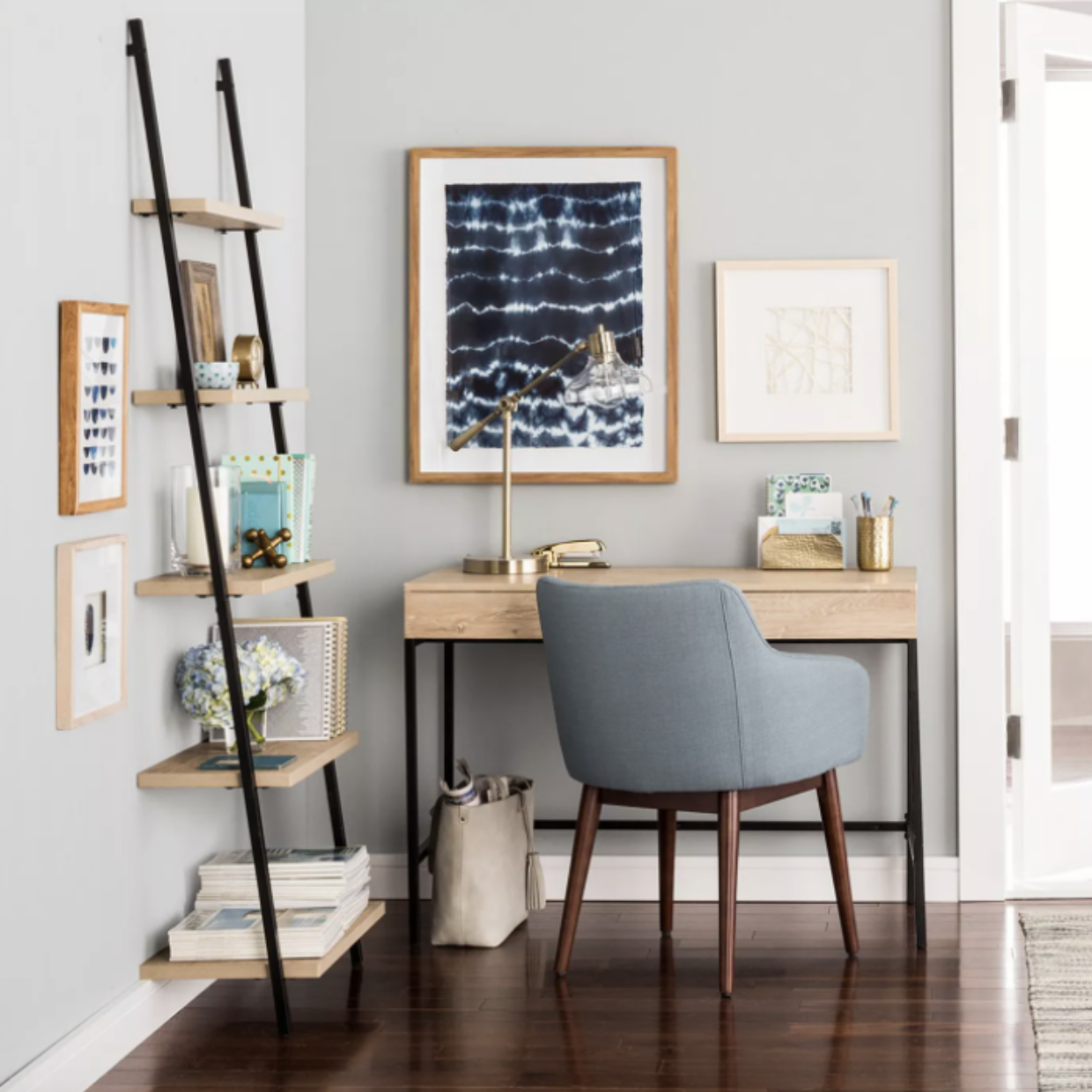
Matching Desk Set
You don’t have to spend hundreds of dollars on a chunky desk, especially if you’re working with a tight space. This sleek option is sturdy and comes in three colors, so you can match it to your existing furniture. Plus, it’s lightweight enough to move around as you figure out the best space for your office setup. It’s part of a set, so you can add a matching shelf, hutch, or bookcase depending on how much room you have to work with.
Ergonomic Desk Chair
If you can only splurge on one thing, invest in a good desk chair. You’ll be sitting in it for 8 hours a day, and it’s hard to be productive if you’re uncomfortable. This option from Amazon has more than 800 5-star ratings, and reviewers rave about how comfortable it is.

2. Separate Your Workspace
In addition to finding the right place to set up your permanent workstation, you’ll also want to consider how you’ll separate it from your living space. If you’re setting up a desk in your bedroom or living room, there are ways you can make it feel like a totally separate area so it doesn’t feel like you’re sleeping in your office after you log off for the day. Not only will this make your office feel less invasive in your home, but you’ll likely also be more productive during the day.
Folding Room Divider
If you don’t have an entire room to devote to your office, a classic room divider is an easy way to section off a corner of your bedroom or living room. This one comes in gold, silver, and white, and is slightly opaque to let light through.
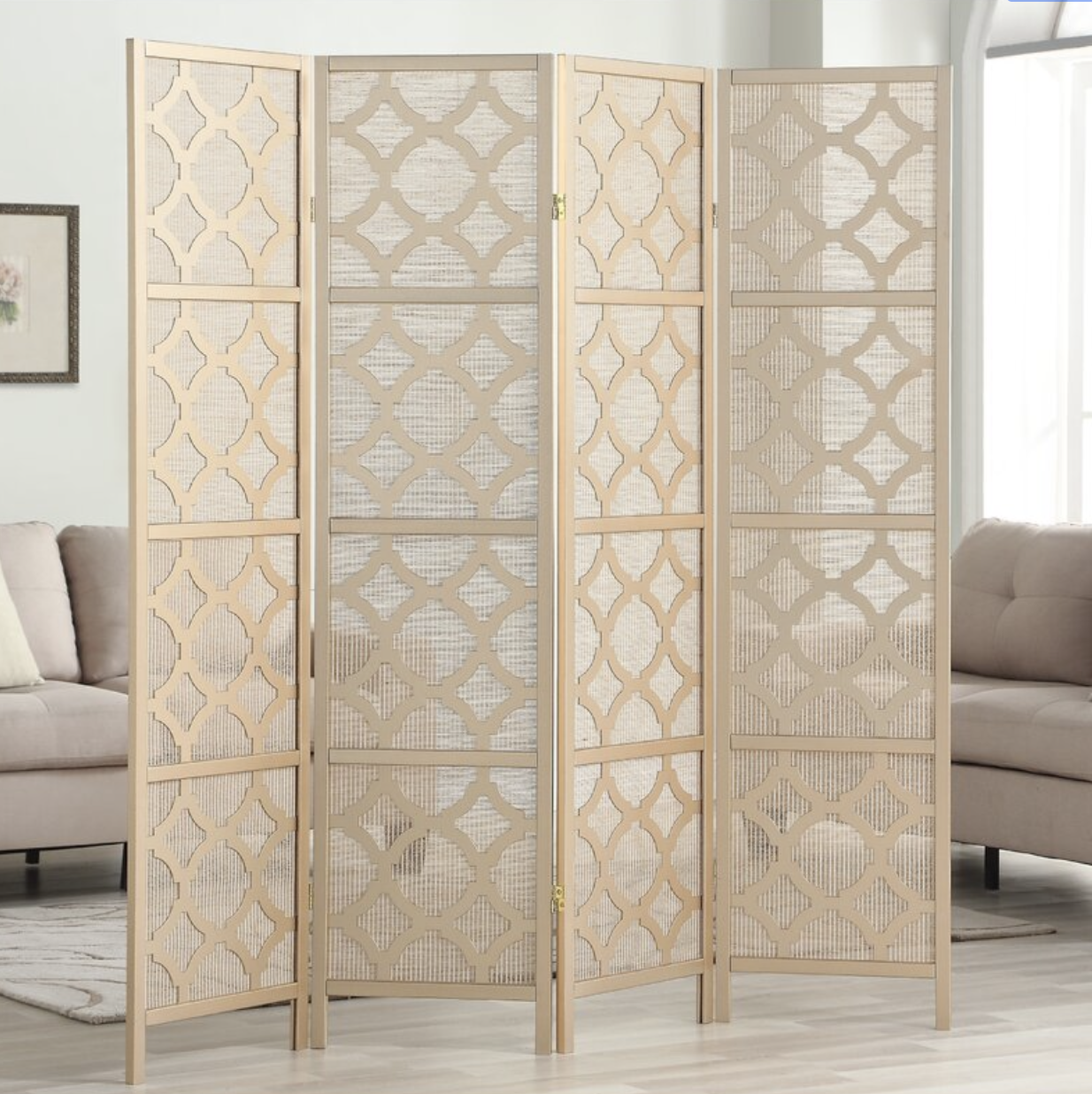
Area Rug
A small rug is another easy way to section off your desk from the living space. Put down a 4×6 or 5×7 rug and arrange your desk, chair, and other accessories on the rug to help you visually separate your office. This area rug comes in four sizes and features muted colors to add subtle pattern without being distracting.
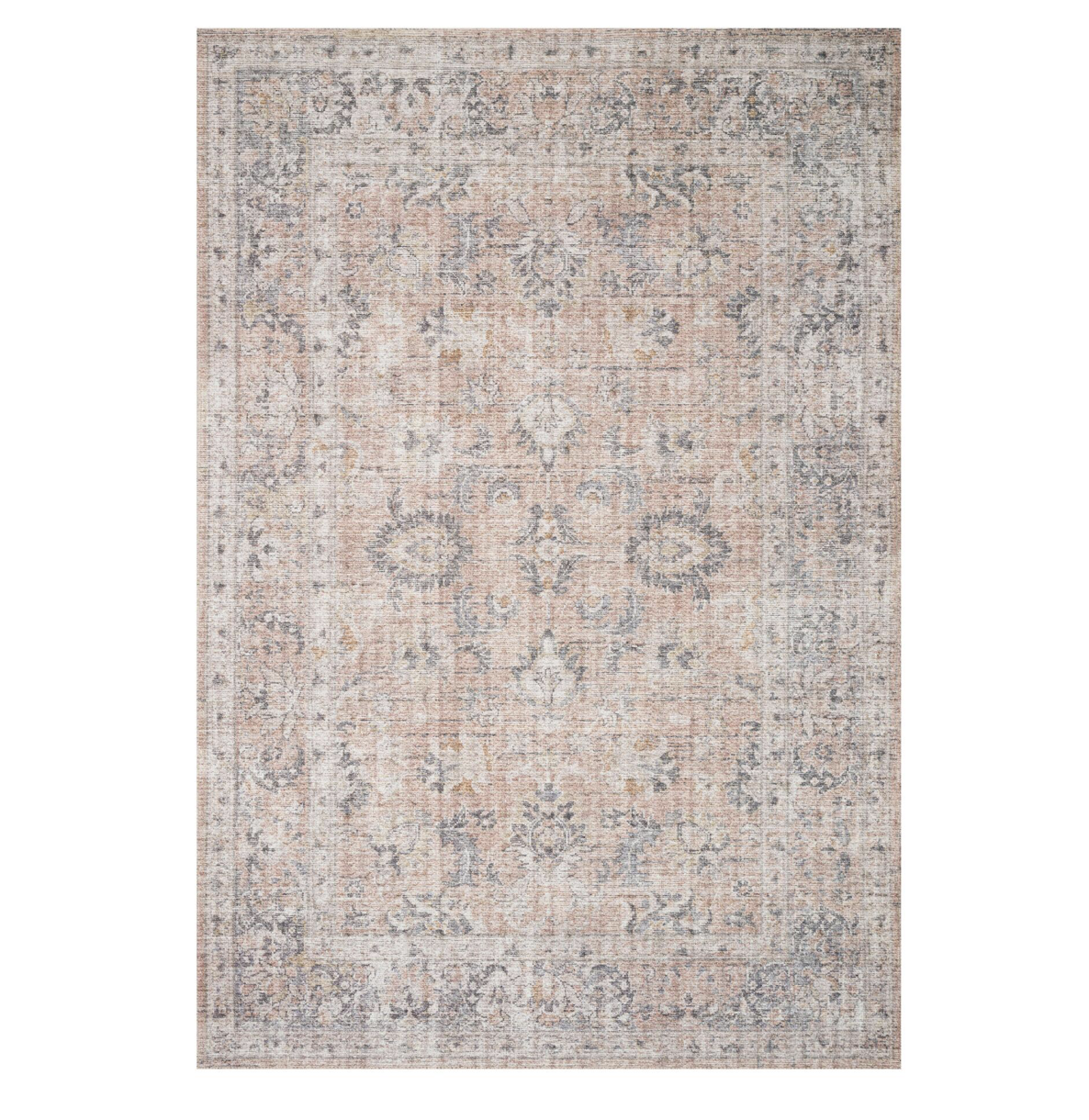
3. Incorporate Sneaky Storage Solutions
One of the biggest challenges with working from home is that it can be hard to separate your workday from leisure time. If your office materials are laying around in the evening, it can be tempting to pick them up out of habit while you’re supposed to be relaxing at the end of the day. Simple storage solutions are an easy way to help you maintain a healthy work-life balance. At the end of the day, slide your laptop into your desk drawer and put away all materials so you’re not tempted to get them back out before the next morning.
Portable File Cabinet
Out of sight, out of mind is the best motto when you’re deciding on office storage options. Look for something that has enough space for pens, papers, tape—anything you use regularly—so you’re able to put everything away at the end of the day. This rolling wood file cabinet keeps papers out of sight, and since it’s on wheels, you can move it throughout the day. If you like a lot of leg room under your desk, move it to the side during the day, then roll it under the desk when it’s time to log off.
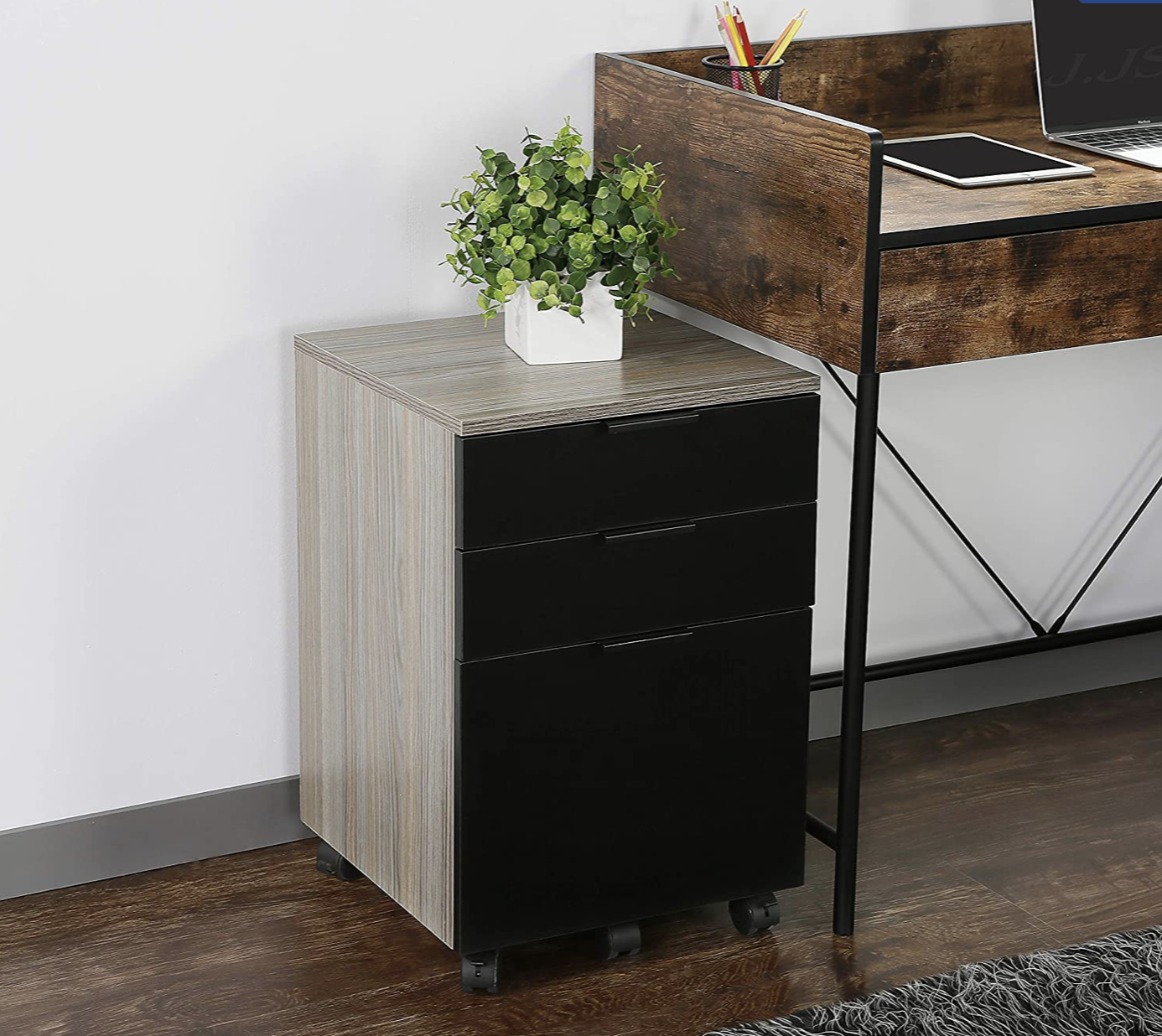
Pretty File Organizer
If you don’t have space for a separate drawer unit, look for stylish tabletop storage instead. This wire file organizer doubles as desk decor, but you can easily slide your planner, notebooks, and other work items into it at the end of each day so they’re not cluttering up your desk.
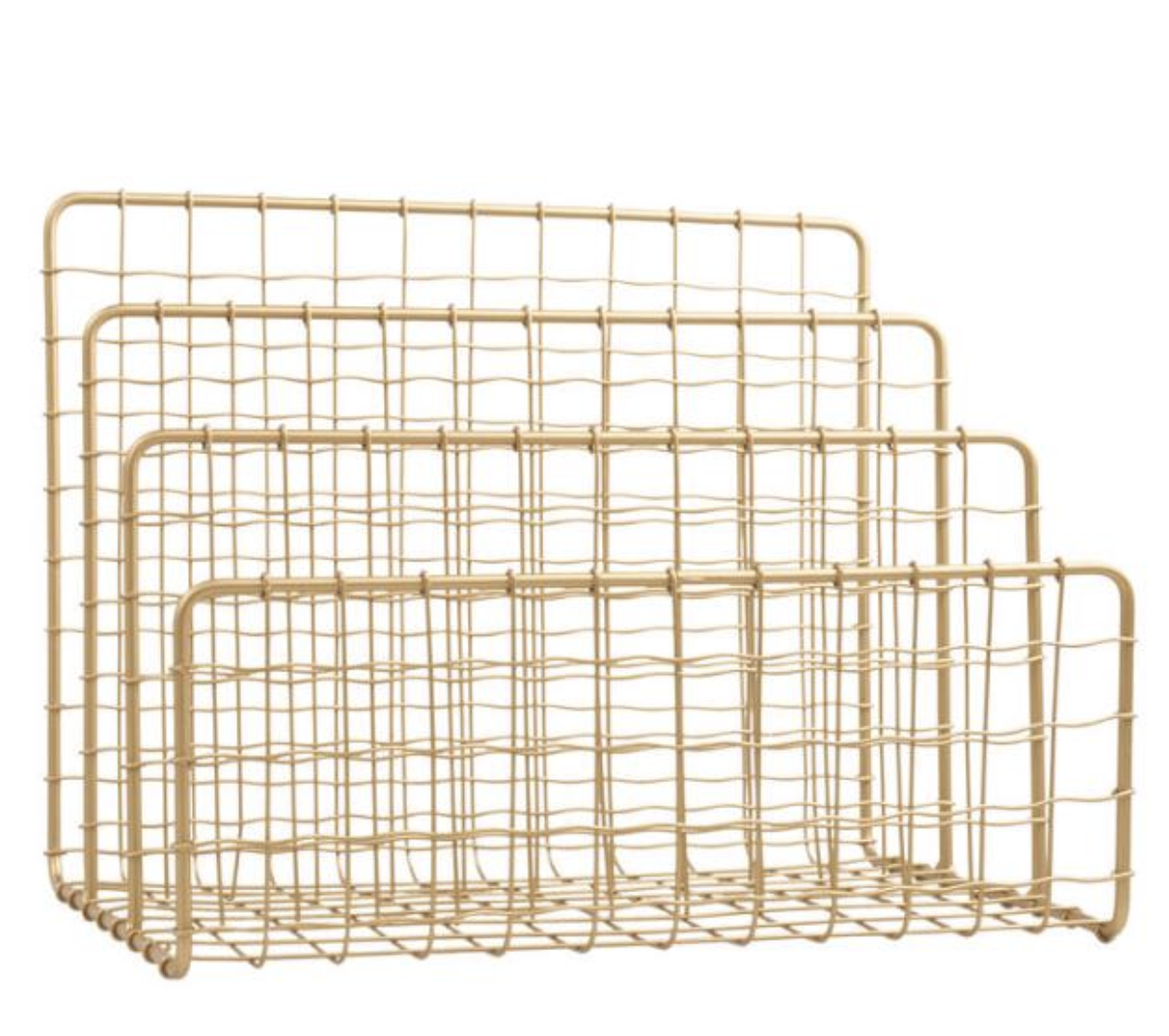
In Other NEWS


























